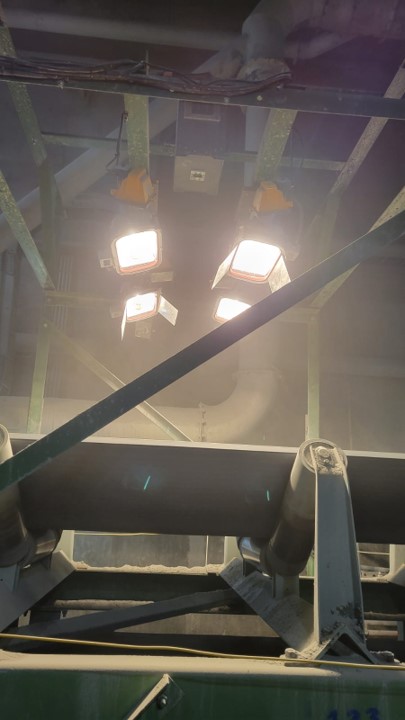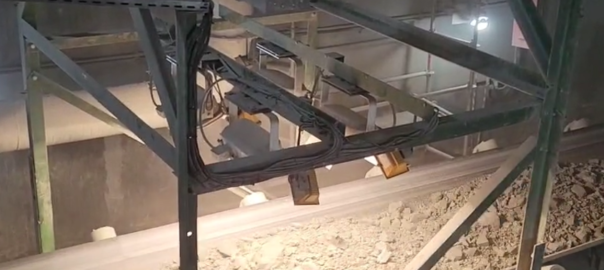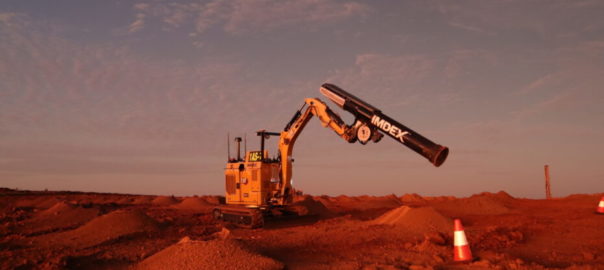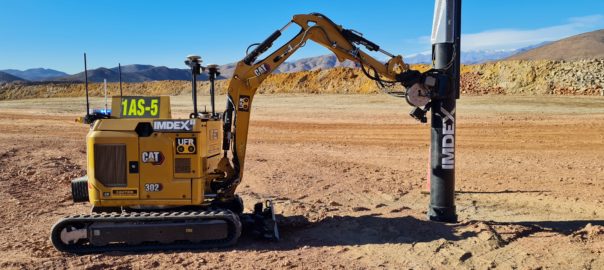Chris Carpenter, VP of Technology for Weir ESCO®, is on a crusade to educate the mining industry on the importance of orebody knowledge.
As an executive with more than 35 years of experience and 40 patents to his name, he has heard numerous stories about “sub-optimal operational decisions” being made at mine sites due to a lack of information.
Through an ore characterisation project under development within several teams at Weir, Carpenter shared the company is focused on developing cost-effective solutions to provide this information in real time.
He is, however, aware that the mining sector, as a whole, needs convincing.
“I can tell you that many of our customers do not yet acknowledge the full value of what we are looking to provide the sector,” he told IM.
This is changing, with industry studies on the correlation between poor orebody knowledge and negative financial impacts and risks in the mine development process coming to light – IMDEX, the Mineral Deposit Research Unit and the Bradshaw Research Institute for Minerals and Mining at the University of British Columbia and Ideon Technologies are, for instance, currently engaged on such a study.
In announcing the study, IMDEX Chief Geoscientist, Dave Lawie, hit on a similar theme to Carpenter: “For the mining industry to adopt this technology, it must have clear evidence of the financial impacts and risks of poor or no orebody knowledge and a way of assessing the most efficient methods of collecting, analysing and optimising it.”
What “this technology” is remains open to debate, with many pre-concentration and ore sorting technologies continuing to sprout up among fertile innovation soil in the mining sector.
ESCO and Carpenter believe this technology – at least in a base metals and iron ore application context – has roots in Sustainable Development Technology Canada (SDTC), an arm’s-length foundation created by the Government of Canada to fund new clean technologies. Motion Metrics International Corp received SDTC funding back in 2020 for a project using the core innovations of hyperspectral imagery (HSI) sensors, 3D particle size distribution (PSD) analysis and machine-learning algorithms to control energy-intensive mining equipment, an SDTC backgrounder from 2020 explained.

Motion Metrics, in a separate announcement, said the 3.5-year project would lead to the design, development and deployment of a commercial mine-to-mill energy efficiency solution.
“Upon successful completion, mines worldwide will be able to order and deploy this solution, without changing their daily operations, to meet their sustainability targets while reducing their comminution costs,” it said.
University of British Columbia’s Norman B. Keevil Mining Engineering Department and several other organisations partnered with Motion Metrics for this project.
A lot has changed in the four years since this announcement, with Weir Group having acquired Motion Metrics International Corp and been incorporated into ESCO.
IM initially reported on developments of what Carpenter referred to as an “ore characterisation” project in 2022. At that time, this consisted of a BeltMetrics™ trial installation using a MOTION METRICS™ advanced imaging sensor for PSD analysis and a commercial, HSI sensor positioned above a conveyor that was directly after the crusher in a mine’s flowsheet.
When IM caught up with Carpenter in late July, he could report on not only progress with the BeltMetrics installation, but also a fixed-term trial of “ore characterisation” in a TruckMetrics™ installation.
“We have now run two different applications for the technology,” he said. “The belt monitoring trial continues to operate and has demonstrated the ability to predict SAG mill throughput based on the input ore characteristics. We also ran a very successful trial of bulk sorting using similar technology looking at the content of haul trucks. The trial monitored and analysed around 1,000 trucks and several were identified as low grade. Extensive lab testing continues as we evaluate mine ore samples to understand the capabilities of our approach. Based on our lab and field evaluations we are convinced the technology will allow us to quickly and accurately monitor grade, alteration, deportment and deleterious minerals.”

“I would say our proof of concept work has really allowed us to now pick up the pace of investment and search for more development partners to further this technology.”
The TruckMetrics ore monitoring trial – carried out on 100-232 t-payload trucks – may pique interest here, but Carpenter says the initial product development path lies in the processing plant and on the conveyor.
“We are looking to, first, put more minimum viable products (MVPs) out in the market for belt-based solutions,” he said. “While our initial entry into this space was to look at bulk sorting – and we recognise this is still the ‘big target’ – [the] voice of [the] customer research has identified a huge need to provide plant-based systems for applications in managing stockpiles and feed grades.”
These MVPs are likely to be deployed on “development partner” sites with existing separation mechanisms downstream of the crusher – ie apron feeders – where diversions can be made based on the HSI and PSD data.
This same voice of the customer research highlighted the need for an in-pit system that could boost productivity, throughput and recovery ahead of the plant, yet the financial amount estimated for a commercial system based on the HSI and PSD sensor combination did not find favour.
“This has led to our own research into what we feel is a new-to-the-world application or modification of standard HSI,” Carpenter said. “We believe this will give us a competitive edge in the market.”
Illumination restrictions and uses have often been touted as the potential drawbacks of using spectral imaging in the ore sorting space, which IM understands is one of the areas of focus for Weir’s own R&D and lab-based testing.
But there are also other factors to consider ahead of a commercial Weir proposition – whether that is in the pit or plant – landing on the market.
“We don’t just want to be sensor salespeople,” Carpenter says. “The complexity and variety of applications will require a shift to specific solutions for our customers and the need to back that up with the aftermarket service our customers expect becoming their productivity partner.
“What we are proposing is more than just technology; it needs to be a solution that validates the value on a regular basis in a continuous loop.”
That same loop comes back to Carpenter’s and Lawie’s assessment of the industry need to acknowledge the value of such data ahead of adopting the technology.
“Fortunately, our ‘Mining technology for a sustainable future’ focus at Weir is allowing us to invest the money the industry needs to provide both the value generation and value acknowledgement to make such solutions viable and effective,” Carpenter concluded. “This type of work – and orebody knowledge more widely – is critical for the future of mining.”












